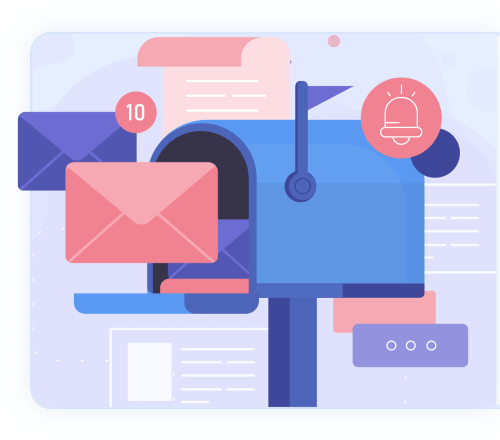How to Use Behavioral Science to Design the Perfect Customer Experience?
Here is our take on the best way to utilize behavioral science to design the perfect customer experience.

Most businesses focus on a transactional customer experience — what happens at the moment of purchase. In reality, before and after events of the transaction have an equal impact on your customer satisfaction and loyalty.
In this digital age, customers are spoilt with choices. As a result, it is more important than ever to delight them and keep them returning for more.
Luckily, behavioral science can help us do just that.
Behavioral science is the study of how people make decisions and how they interact with the world around them. It helps businesses understand their customers, so they can create products and services that meet their needs.
But how can you use behavioral science to design the perfect customer experience?
Let us take a look at some of the most valuable findings from behavioral science and see how they can help us improve our customer experiences:
The best way to start is to define the current customer journey
An excellent place to start is by defining your current customer journey. By doing so, you can ascertain areas of improvement by asking various questions:
What does a typical customer’s experience look like?
For example, how many touchpoints does it take for them to make a purchase? What is their path through each of those touchpoints? How long does it take? What are the biggest frustrations along the way? How would you describe your brand promise?
A brand promise is what your company stands for and what makes you different from your competitors. In other words, what are you promising your customers? Your brand promise should be reflected throughout your customer experience, including at every touchpoint along their journey.
Look at how customers make decisions using cognitive biases
When designing a great customer experience, it is essential to look at how customers make decisions. A fantastic thing to be observed is, human beings are predictable. We all use the same cognitive biases to make decisions every day.
Here are some of the cognitive biases that you can use to help your customers make better choices:
1. Anchoring bias: This happens when we rely too heavily on one piece of information when deciding. For example, if a customer is comparing two products, they might choose the product with the lower price because it is the first thing they see. If you want to increase sales, consider showing two similar products with different prices so that your customers can compare them more objectively.
2. Confirmation bias: This means that we tend to seek information that confirms our beliefs and ignore information that could challenge them — even if it is true! When dealing with confirmation bias, try using testimonials or personal stories rather than facts and figures in your copywriting or sales materials.
3. Framing effect: The framing effect is a cognitive bias that assumes how a choice is presented will influence the outcome of that decision. For example, if you ask people to choose between two options that both cost $100, but one has a discount of 10%, they will select the discounted option more often than those who do not receive a discount.
Do not be afraid to use micro-testing to get feedback on what works and does not
You do not have to wait until you roll out a new feature or product before getting feedback from your customers. You can use micro-testing techniques like A/B testing or persona surveys to get immediate feedback from participants before making any significant changes or investments in something that might not work out as expected. It will allow you to make adjustments before investing too much time in something that might not work out as expected.
Micro-testing involves running small tests with a small sample size to get immediate feedback on what works and what does not before making any changes or improvements. For example, if you want to test whether changing the wording on a button increases conversions, then run an A/B test before making any changes to know precisely what impact those changes have had on conversions (if any).
Consider how social proof can influence customer decisions
Social proof is one of the most powerful influences on our behavior. It is one of the reasons we look at what others are doing before deciding what action we will take ourselves — whether it is buying something or trying a new restaurant.
If you want to encourage customers to buy more, consider using social proof in your design, for example, showing reviews from other customers or including testimonials in your communication.
If people see that others have taken action, they are more likely to do so themselves — even if they never saw them take it!
Understand how your product or service meets client needs through heuristics
At the core, behavioral science is about understanding how humans behave. It is about making sure that your product or service meets client needs.
The best way to do this? Use heuristics.
Heuristics are simple rules of thumb that help us make decisions and solve problems more quickly. They are cognitive shortcuts that allow us to avoid having to evaluate every option and make a perfect choice from scratch.
Here are some ways you can use these shortcuts to create an incredible customer experience:
- Make things easier for customers by reducing their choices. You might think giving people more choices would be better, but it turns out that if you give them too many options, they become paralyzed by indecision.
- When creating an incredible customer experience, do not overwhelm your customers with too many choices — give them just enough to make informed decisions without feeling like they must sift through every possible option out there (or worse yet — make no decision at all).
Concluding thoughts
We hope this article has helped show how crucial behavioral science is to the customer experience. The human brain is a complicated organ, capable of many things, but it is also one that even the most minute details can sway. But whether we are aware of it or not, it is often being swayed. That means you will have to work extra hard to create a good customer experience for your consumers that aligns with their intrinsic motives and satisfies their self-interested needs.
You might also like:
- Behavioral Segmentation: Why It Matters, Types, Examples – Here is our take on behavioral segmentation. What makes it important? It’s different types and examples.
- To see how SmartKarrot helps B2B companies streamline and scale customer success, Request a Demo.












